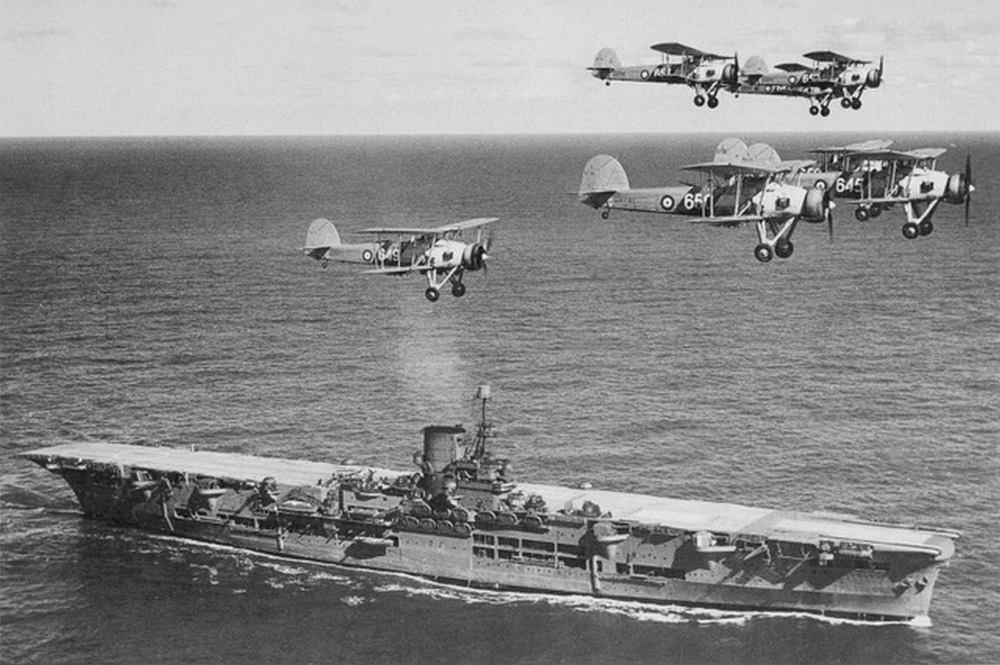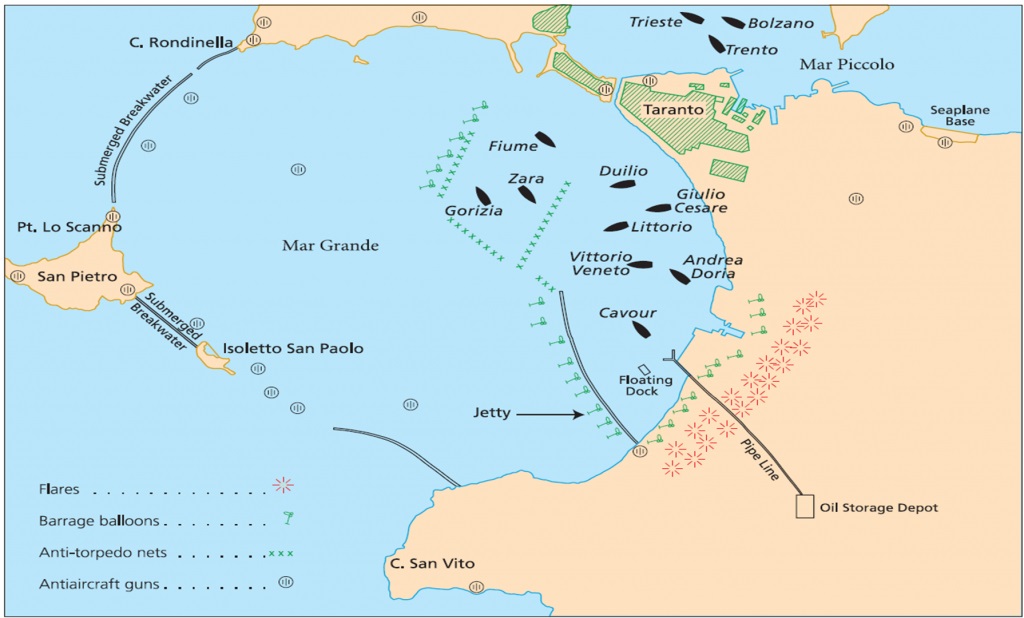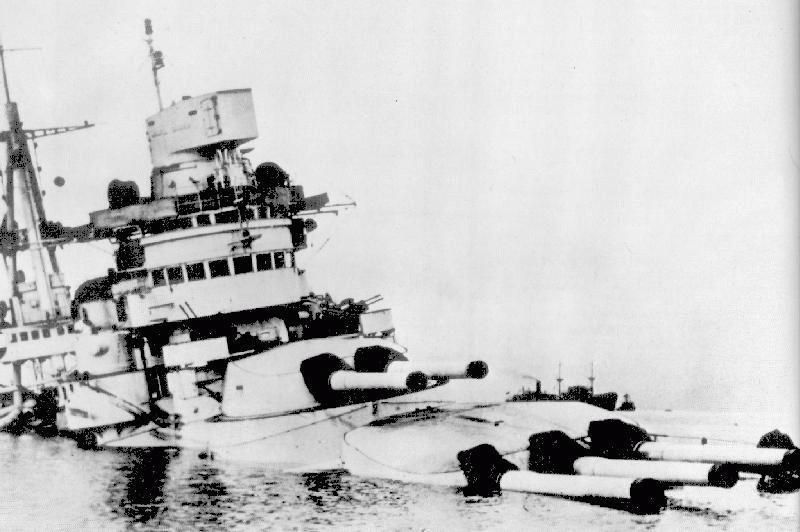
|
Battle of Taranto |  |
||||||||
|---|---|---|---|---|---|---|---|---|---|---|
 |
 |
 |
 |
 |
 |
 |
 |
 |
 |
 | |||||||||
|
On the evening of November 11, 1940, 21 Fairey Swordfish took off from the British aircraft carrier HMS Illustrious, towards the battle fleet of the Italian Navy, Regia Marina, at anchor at the port of Taranto. Despite forgoing the element of surprise and the shallow waters of the harbor, Fairey Swordfish, using aerial torpedoes, were able to inflict major damage on the Italian fleet, for the loss of only two airplanes. The Swordfish had severely damaged the Littorio, Caio Duilio, and Conte di Cavour, causing almost 700 casualties. The attack was carried out in two waves. The Illustrious was positioned 170 miles (275 km) from Taranto and twelve aircraft from Nos. 813, 815, 819 and 824 Squadrons were launched at 20:35 hours. Only six aircraft carried torpedoes—four carried bombs and two carried both bombs and flares. No gunners were onboard—instead extra fuel was carried in place of the gunners. The first wave was led by Lieutenant Commander K. Williamson.
 The attack began by dropping a line of flares from 7,500 ft. (2,285 m) and these two aircraft dove through heavy flak and dropped their bombs on an oil storage depot and set it ablaze. As the flares lit up the harbor, the attack was led by Williamson, but his plane was hit by flak and he was forced to ditch. A second aircraft attacked a Cavour-class ship from 700 yards (640 m) and scored a hit. Other aircraft attacked the same ship but scored no hits. Other planes concentrated on two Littorios and one ship received several hits. Of the first wave, all aircraft returned with the exception of Williamson. A second wave lifted off from the Illustrious at 21:23 hours led by Lieutenant Commander J. W. Hale. Five aircraft were armed with torpedoes, two with bombs and two with bombs and flares. One aircraft left 20 minutes late after being damaged while taxiing on the flight deck. One aircraft aborted the mission due to a malfunction, but the remaining eight aircraft reached their target. The attack procedure was repeated as the first with two aircraft dropping flares and attacking the oil depot. The other aircraft concentrated on two Littorios. One aircraft came in so low that its landing gear hit the water sending up a tremendous spray, but luckily he was able to recover. Only one aircraft failed to return from the second wave.
 The Conte di Cavour. Aerial reconnaissance two days later showed that the Cavour-class battleship Conte di Cavour was sunk; one Duilio-class battleship was heavily damaged; one Littorio was badly damaged, one Trento-class and one Bolzano-class cruiser were severely damaged, two destroyers were damaged; and two auxiliary vessels were sunk. Italy's serviceable battleships had been reduced from six to two—only Vittorio Veneto and Giulio Cesare had escaped damage. The lopsided victory was achieved at a cost of only two Swordfish. Success of the mission was due to accurate photographic reconnaissance, almost up to the last hour, and the ability to carry out a surprise attack. This same type of attack would be repeated a year later except on a much larger scale. However, it wouldn't be the British attacking this time, it would be an attack carried out by the Imperial Japanese Navy against the American fleet, anchored at Pearl Harbor. Before World War Two, battleships were the primary capital ships used in offensive naval battles and carriers provided support as a defensive measure. At Taranto, this was a rare use of the carrier for an offensive maneuver. The British had been accumulating experience using carrier aircraft to attack naval targets off Norway. On April 11, 1940, several Swordfish aircraft were launched from the aircraft carrier HMS Furious and attacked two enemy destroyers at Trondheim, scoring one hit. On April 13, 1940, a Swordfish operating from the HMS Warspite off Norway, spotted and sank U-boat, U-64, with bombs. It was an auspicious beginning for the use of the carrier. The attack at Taranto would be investigated by the Japanese Lieutenant Commander Takeshi Naito, the assistant naval attaché to Berlin, who flew to Taranto to investigate the attack firsthand. Naito would later have lengthy discussions with Japanese Commander Mitsuo Fuchida. Fuchida would lead the Japanese attack on Pearl Harbor on December 7, 1941.
© The Aviation History On-Line Museum.
All rights reserved. |